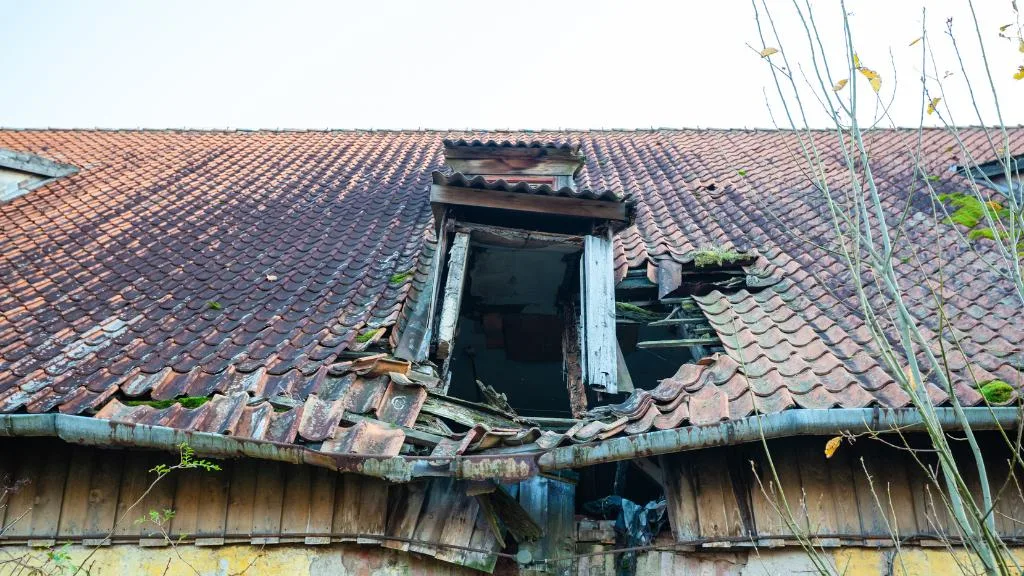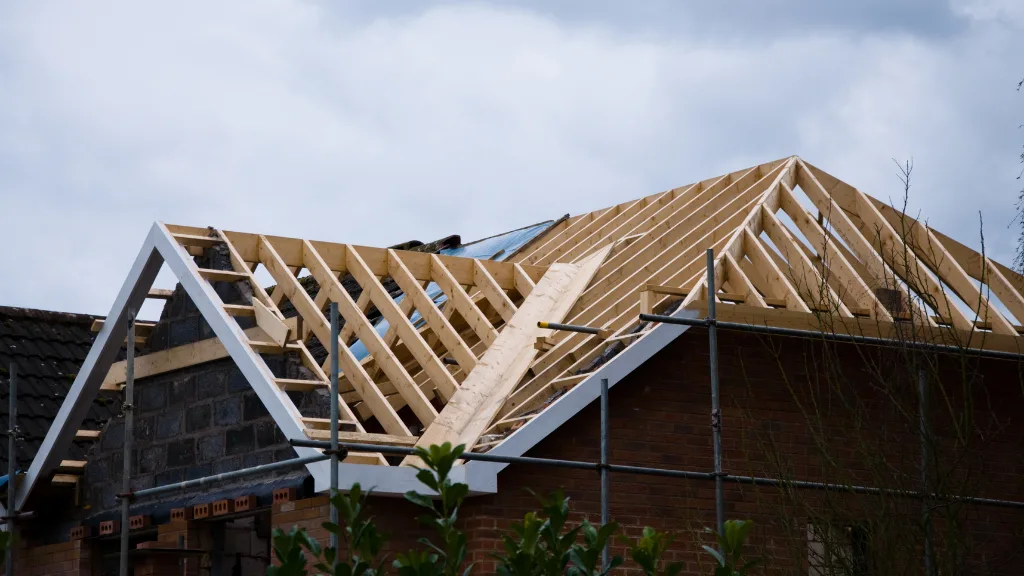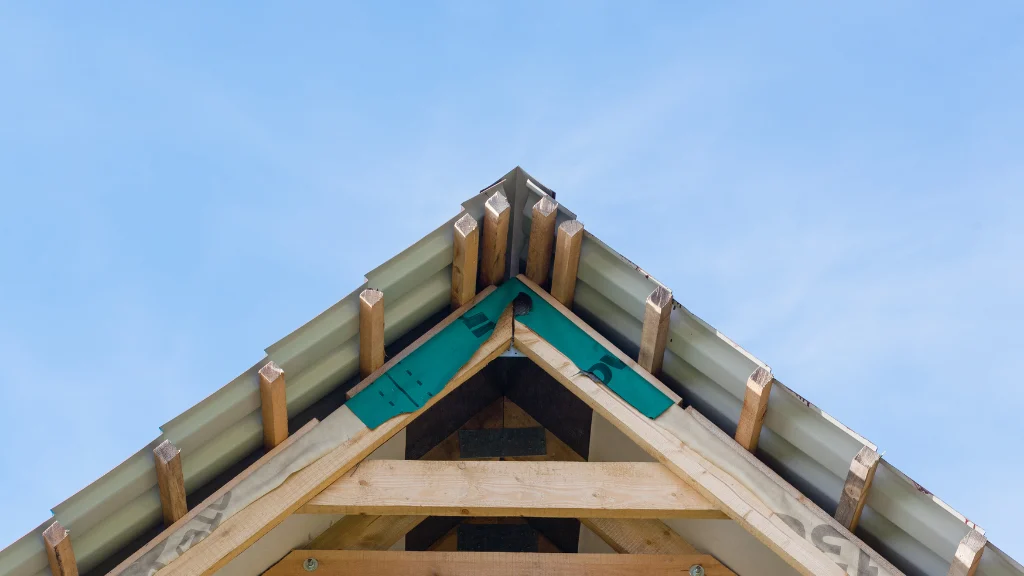
When your roof is sagging, it can cause a lot of problems for you and your family. It’s important to know how to fix a sagging roof as soon as possible!
In this blog post, we will discuss the steps that need to be taken in order to repair a sagging roof.
- What Are the Steps in Fixing a Sagging Roof?
- What Are the Most Common Reasons for a Roof to Sag?
- How Do I Know if My Roof Needs to Be Fixed?
- What Tools and Equipment Will I Need to Fix a Sagging Roof?
- How to Determine if Roof Shingles Are Sagging?
- Roofing System Support to Prevent Roof from Sagging
- FAQs
- How to Prevent the Roof From Sagging in the Future?
Roof is a very important part of the house. It protects the inside of your house from outside elements and it also helps to regulate the temperature.
When the roof is sagging, it can affect many parts of your house. It can cause leaks inside and outside.
This will start to damage walls, ceilings, insulation and other things in the home that are very expensive to repair or replace.
If you see any indications on a low area on your ceiling, contact someone right away or repair it yourself before things get worse.
What Are the Steps in Fixing a Sagging Roof?
Step one: Inspect the roof and understand why it is sagging. There can be many causes of a sagging roof, so understanding what could have caused this will help you decide how to fix it.
Step two: Look at your roof and understand what needs to be done. If you know the cause of your sagging roof, it will help you decide how to go about fixing it.
For example, if there are ice dams that need to be removed or outdated flashing, then this is something that can easily be taken care of by a roofer.
Step three: Determine what needs to be done if you have a sagging roof that is caused by heavy snowfall or other natural causes.
Maybe the best thing for this type of problem will be hiring a contractor who can add extra support beams in your attic, remove part of your ceiling and replace it with stronger boards.
This will be a more extensive project and should only be done if you are unable to resolve the problem by yourself.
Step four: Fix your sagging roof. Once you have decided on how to fix it, go ahead and get started with the necessary repairs using the necessary tools and materials.
Step five: Keep an eye on the weather and make sure there are no problems in the future with your sagging roof!
Make note of any changes that take place over time so that if it happens again you can handle it right away.
Follow these steps and you should be able to fix a sagging roof on your own or with the help of a professional.

What Are the Most Common Reasons for a Roof to Sag?
There are a number of common reasons for roofs to sag:
- Heavy snowfall
- Outdated flashing or ice dams that need to be removed from your gutters
- Heavy wind and rain storms that can cause shingles or tiles to loosen or break
- Heavy rain that causes water to collect around the roof and cause damage
- Faulty materials or construction that can lead to sagging or cracks in the roof
These are some of the reasons why roofs sag, but there are many more. Make sure you understand why your roof is sagging so that you can fix it as soon as possible!
How Do I Know if My Roof Needs to Be Fixed?
If any of the following signs appear on your ceiling or walls then this could mean that your roof has started to sag:
- Water spots on your ceiling or walls
- Sagging ceilings in the attic
- Puddles of water around the house that are caused by leaks inside and outside
Cracks in exterior walls which can be an indication that there is a problem with your roof.
These cracks may only appear when it rains, but if you see them then this is a sign that you should call for help as soon as possible.
What Tools and Equipment Will I Need to Fix a Sagging Roof?
Tools needed for fixing a sagging roof include:
- Ladder
- Flashlight
- Safety gloves
- Hammer
- Utility knife
- Paint brush
- Rafters
- Plywood boards
- Roofing nails and sealant
Some of these items will only be needed depending on the job you are doing, but these are the basic tools that every contractor has in their toolbox.
How to Determine if Roof Shingles Are Sagging?
Most people notice first when their shingles start to sag because it can lead to serious damage on your ceilings and walls.
However, the only way you will know if this is happening is by looking at your roof regularly or checking underneath for any signs that water might be leaking in through damaged areas.
If you notice that shingles are curling up over time then there could be a serious problem underneath.
This is especially true if you notice puddles of water on your ceilings or walls, which can lead to serious damage and mold growth over time.
If the shingles on your roof are sagging then this could be a sign that there might be underlying problems with metal flashing – use a flashlight for help seeing these areas better.
If you see any of these signs then it is best to hire a roofing contractor as soon as possible – this will help prevent water damage and other issues that can lead to mold growth.
Roofing System Support to Prevent Roof from Sagging
There are different ways in which you can support your roofing system so that it does not sag.
This includes using joist hangers, which will help provide extra support to the upper levels of your home and keep them from sagging over time.
Another option is your underlayment and gusset plates.
Underlayment – How Can an Underlayment Prevent the Roof From Sagging?
An underlayment roof is a thin piece of material that goes underneath shingles to add extra support and help prevent sagging.
If you have noticed any signs of water damage or other serious problems with your ceiling, then it might be time to consider adding an additional layer for added security.
An underlayment is especially important for people who live in very cold or wet climates because it can help prevent any damage from heavy snowfall.
There are different types of underlayments, including rubberized asphalt sheets and synthetic materials that go underneath shingles to add extra support.
If you have noticed problems with your roof then this might be the best solution to help prevent future issues.
How to Fix an Underlayment Roof?
If you have an underlayment roof and notice that it has started to sag, then this is a sign that the material used might not be strong enough for your home.
You can replace these materials with other options such as:
Rubberized asphalt felt – stronger than paper or fiberglass felt and it comes in pre-cut strips which are easy to install.
Plywood – this is a very strong material that won’t rot in the rain and it comes in different thicknesses for added support.
This will help prevent your roof from sagging any further, but you should also be aware of where the gusset plates are located on your home because these can add extra support and prevent sagging.
Gusset – How Can a Gusset Prevent the Roof From Sagging?
A gusset plate is a special type of metal that goes under the shingles and helps to support your roof.
If you see cracks in your ceilings or walls, this could be an indication that there is not enough support on the outside of your home for your rooftop.
Gusset plates can add extra strength to roofs which will help them to support the weight of anything on top.
How Can You Tell if There Is a Problem With Gusset Plates?
If you suspect that the weight of your rooftop might be too heavy for an underlayment roof, then it’s best to hire a contractor who will check out these areas and make any necessary changes as soon as possible.
This way, you can prevent any further damage to your home and make sure that the weight of anything on top is properly supported.
Is There a Way to Fix Gusset Plates?
If you notice cracks in your ceilings or walls, this could be an indication that there might not be enough support for your rooftop.
Gusset plates are usually located around your chimney and other areas that have extra stress put on them by heavy wind, rain and snowfall.
These metal plates will be hidden under the shingles so it will be difficult to tell what is in your attic and where they are located.
If you suspect there might not be enough support for your roof, it’s best to hire a contractor to inspect your home and determine if this might be why sagging has occurred.
FAQs
What are some DIY ways of repairing a sagging roof?
The best way to fix a sagging roof with minimal damage is using self-adhesive metal flashing.
This can easily be cut in any shape and will protect your roof from moisture, sun damage and other elements that can lead to sagging.
You can also add wood battens to your ceiling and walls if they need extra support.
This will help strengthen them so that you do not risk any accidents in the future. If one or more of your tiles are loose, then you can use roofing cement to secure them in place.
This will help keep the entire roof strong and make sure it does not collapse on top of anyone below.
If you are not comfortable fixing the problem yourself then there are professionals who can do this for you with minimal work needed on your part!
However if you need to cut out pieces of metal flashing or replace shingles, think about doing this yourself to save some money!
How long does it take to fix a sagging roof?
In most cases, it will only take one day or less for your contractor to patch up and repair damaged areas on your ceiling or walls.
If the problem is more extensive then it may take longer, but this will depend on your roof and what needs to be done.
Once you have fixed your sagging roof, make sure that you keep an eye on it for the next few weeks to see if everything is okay.
Can I save money by fixing my sagging roof myself?
As long as you have some basic tools at home and you understand how to do basic repairs, then yes.
You can save a lot of money by doing the work yourself and this is one of the reasons why many homeowners decide to fix their own sagging roofs instead of hiring someone else.
However, if you are not comfortable doing any of the work yourself then do not try it!
It is always better to have someone else fix your roof for you so that they can take care of all the dangerous elements involved.
Roofing contractors often charge hundreds or thousands of dollars in order to repair damaged areas on your ceiling and walls – but you can save a lot of this money if you decide to do the work yourself.
How to Prevent the Roof From Sagging in the Future?
If your roof has sagged once, then it could happen again over time. Luckily there are steps that you can take right now to help prevent any further damage from happening.
The best thing that you can do is to make sure your gutters are clean and free of debris.
This will help prevent ice dams from forming, which become one of the main causes for roofs sagging over time.
Also check your attic regularly to make sure it has enough insulation – this will keep cold air away from any areas where it might cause your roof to sag.
If you have noticed that some of the tiles on your ceiling or walls are loose, then consider adding ridge caps so they stay in place properly.
If one area is sagging it can lead to other areas becoming damaged as well – this will help prevent any further damage from happening and keep all parts of your roof intact.
If you’re still unsure about how to fix your sagging roof, we hope this blog post has helped.
We know that there are a lot of people who have been in the same boat as you and it’s important for us to share what we’ve learned with others.
The most important thing is not to panic or make any sudden decisions when dealing with a sagging ceiling – take time to explore all options available before making a plan of action.
Remember, fixing your roof may be easier than you think!


